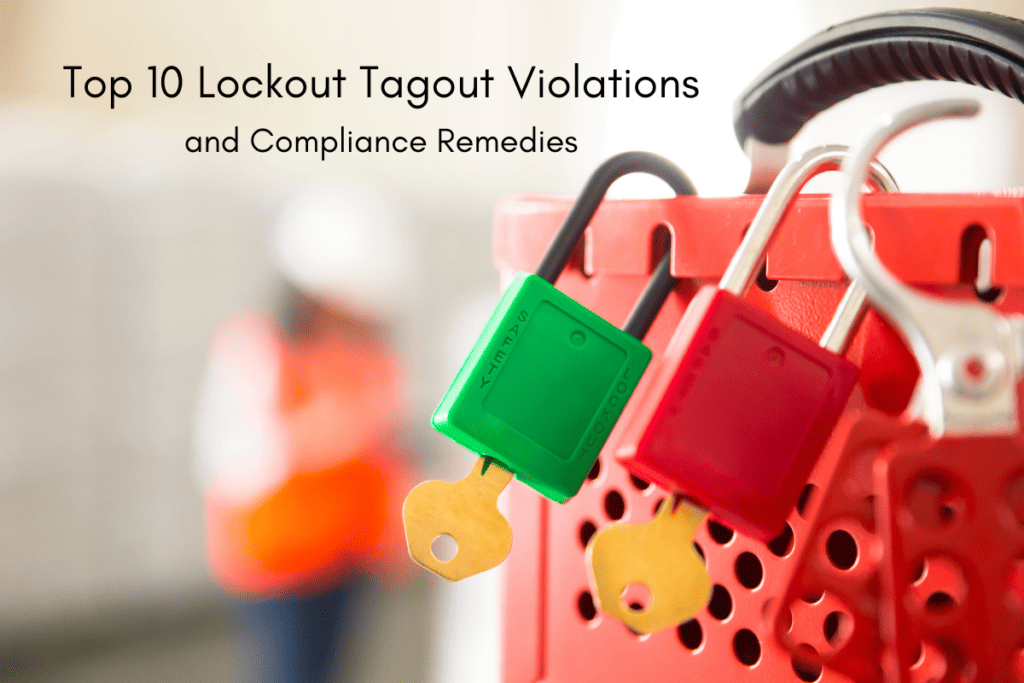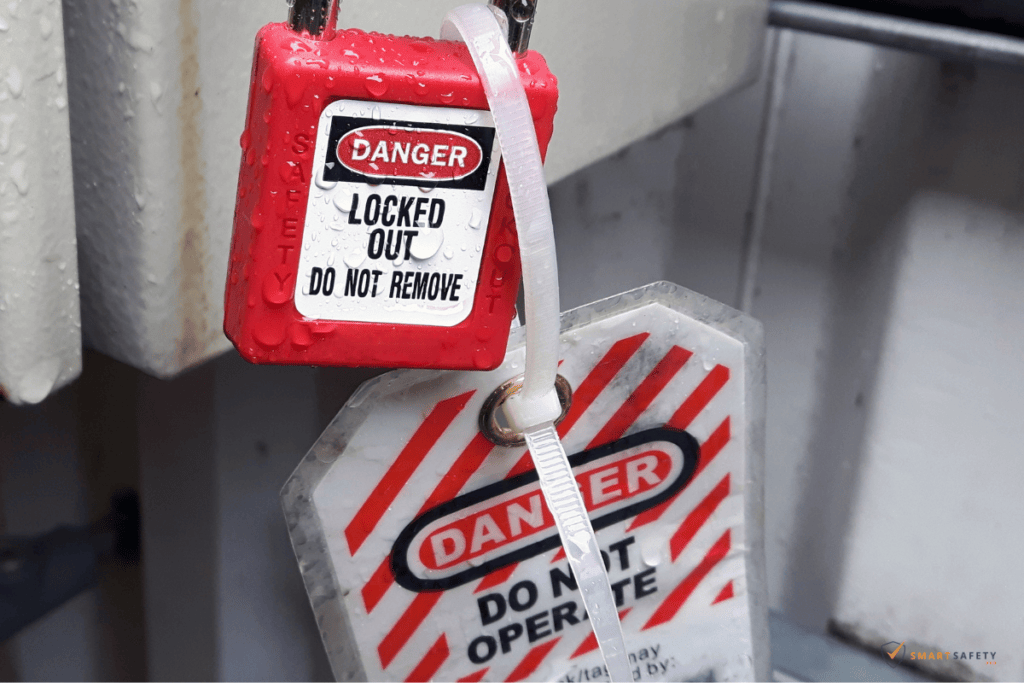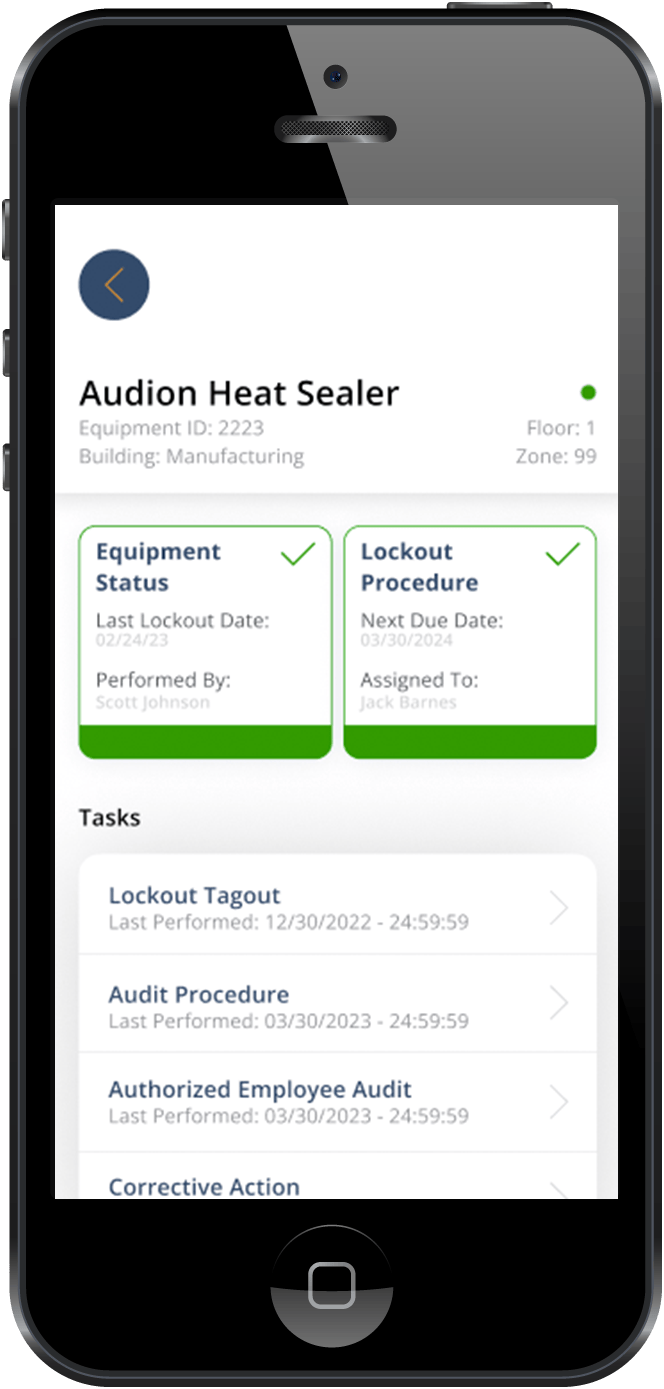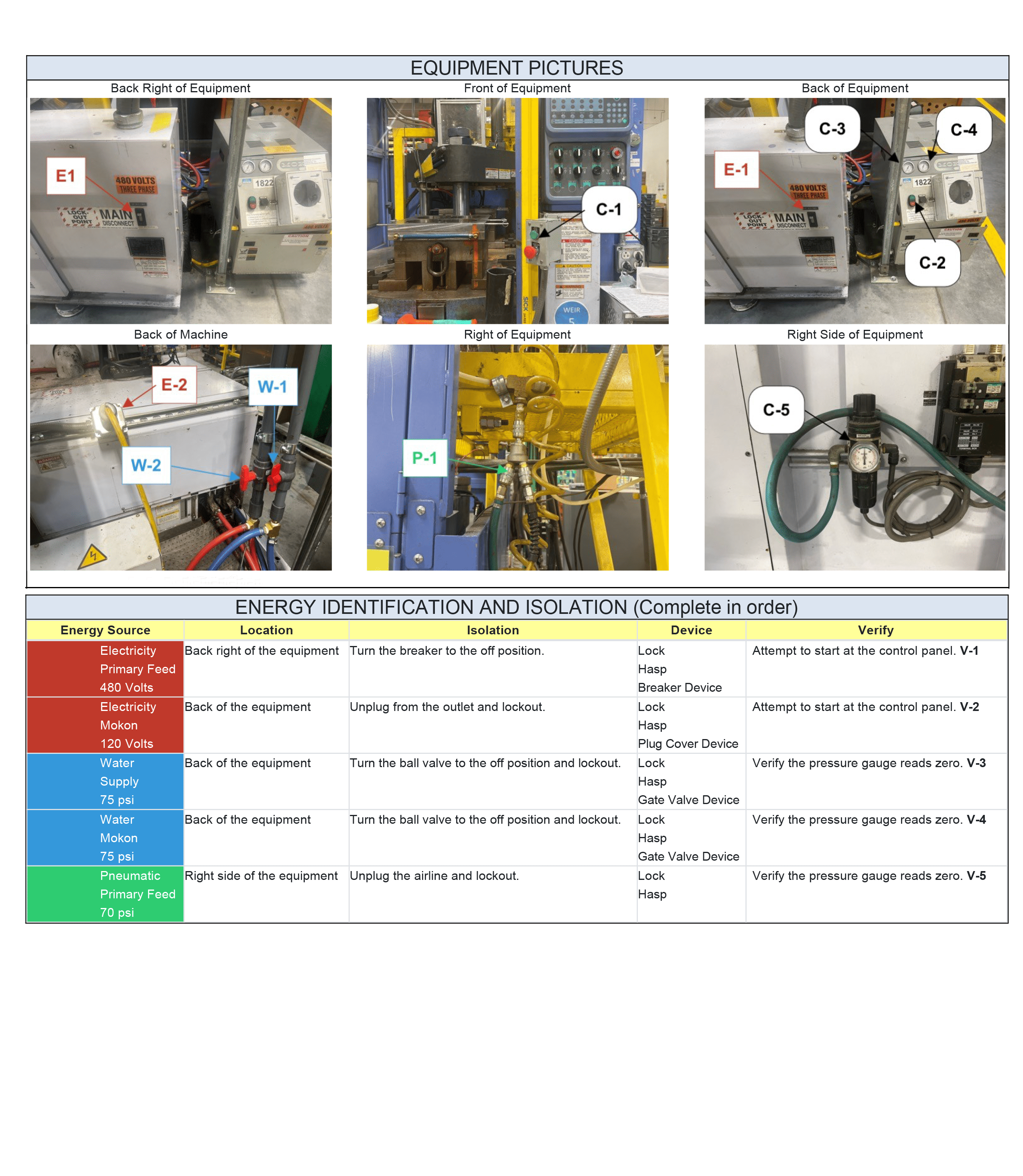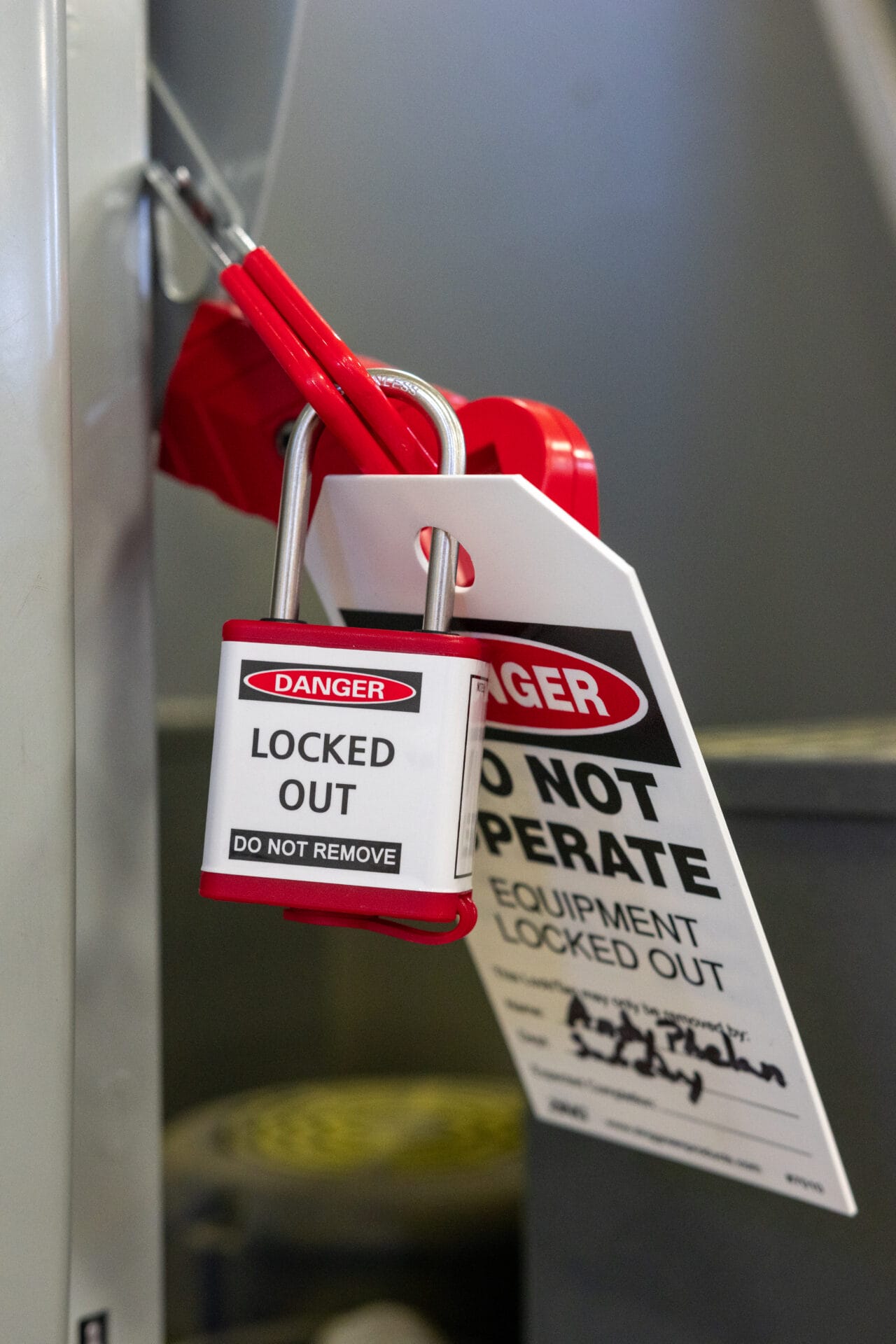This article outlines the key steps required in building a lockout tagout program. These steps are applicable for any organization, at any stage in the program building process.
Due to past safety incidents and current OSHA regulations, most organizations dealing with hazardous energy have some level of safety measures or lockout tagout program in place. However, many of these institutions are struggling with establishing a program that provides effective maintenance and oversight of their hazardous equipment, safety procedures, and personnel.
For employees put in charge of building a program, it can feel like a daunting task knowing where to begin and what to include in a lockout tagout program. Even those who have experience building a LOTO program may feel overwhelmed at taking on this task at a new company.
This article seeks to outline key steps in building a lockout tagout program that can be applicable to any organization, no matter what stage they are at in the program-building process. Regardless of the starting point (building from the ground up or somewhere else along the way), these straightforward checkpoints and tips can serve as a guide towards a more organized and efficient company that is safeguarded by an operative lockout tagout program.
Steps for Building a Lockout Tagout Program
The following steps can serve as a guideline to develop and implement an effective lockout tagout program. While these steps have been oversimplified for ease of explanation, each step can be broken down into multiple smaller steps during its application.
In order to keep this general and applicable, we refrain from getting too specific about the exact pattern to follow. Instead, the generality of these steps allows for them to be adjusted to fit any organization’s current standing and future goals.
Our hope is that each step is specific enough to provide guidance and serve as a kickoff point, while also remaining broad enough to be useful for individuals from all industries and professions.
NOTE: Sometimes, depending on the situation and circumstances, it can be valuable to bring in a consultant, particularly for organizations that have very little experience with or knowledge about lockout tagout. Do what you can yourself, but don’t be shy about bringing in a trained professional to survey the project and give an informed opinion. These steps are designed to make building a lockout tagout program achievable, but outsider support may be what’s most time or cost-effective.
STEP 1: Become Familiar With Regulations
The first step towards building or improving a lockout tagout program is understanding the current industry standards. In order to do this, familiarize yourself with lockout tagout regulations specific to your jurisdiction.
In the United States, the Occupational Safety and Health Administration (OSHA) is the governing body for outlining proper lockout tagout practices and administering violations to those who don’t comply. We strongly recommend becoming familiar with their writings before attempting to build or change a lockout tagout program.
Resources for learning about current LOTO regulations:
- OSHA Regulation 1910.147
- This is the actual OSHA regulation for lockout tagout procedures. In this regulation, the industry standard for lockout tagout is clearly outlined so that employers in any field involving hazardous energy can maintain a safe workplace environment for their employees. For a more in depth dive into key points, requirements, and consequences associated with OSHA 1910.147, see our article here.
- OSHA Standard Interpretations
- Each year OSHA releases a letter containing their current interpretation of the terms outlined in their safety standards. Not every standard is discussed, so it is very possible that there won’t be any additional input from them on lockout tagout. However, it is best to review their most recent statements in case changes to LOTO procedures have been made.
- Compliance Directive CPL 02-00-147
- As explained by OSHA itself, “OSHA Compliance Directives (CPLs) are written instructions providing compliance policies and enforcement procedures on certain subjects, such as compliance with and enforcement of specific OSHA standards, or procedures to implement specific emphasis programs to target particular hazards.” The one linked here focuses specifically on lockout tagout.
- ANSI/ASSP Z244.1-2016 Control Of Hazardous Energy: Lockout
- This is a standard established by ANSI, or the American National Standards Institute. It offers guidelines for controlling hazardous energy from machinery, equipment, or processes that could potentially harm personnel.
While there are a multitude of resources for learning about lockout tagout, these are the most highly recommended since they come straight from official sources. Studying these manuals will provide you with the most up-to-date information, therefore enabling you to build a lockout tagout program that is compliant, efficient, and utilizing best practices.
STEP 2: Conduct a Comprehensive Assessment
Next, it is important to understand the current situation you are working with. Begin by conducting a detailed assessment of your organization’s latest lockout tagout procedures. We often refer to this evaluation as a gap analysis.
A gap analysis is a process that compares an organization’s current performance, procedures, and resources with its target or desired state.
A gap analysis should include:
-
- Identification of all equipment and machinery requiring lockout tagout procedures.
-
- Evaluation of existing lockout tagout policies, procedures, and training materials.
-
- Assessment of the availability and condition of lockout tagout devices and equipment.
-
- Review of historical data on incidents, near misses, and compliance issues related to lockout tagout.
This assessment will allow you to see what is performing well along with the aspects of your lockout tagout program that are lacking. Regardless of where your program is at in its growth, conducting an evaluation on it will only benefit you by providing valuable insights that can be turned into action items.
STEP 3: Establish Clear Policies and Procedures
A crucial next step in building a lockout tagout program is developing clear and concise policies and procedures. Thankfully, this is not a process that has to be completed alone.
Generally, the best lockout tagout procedures are built through collaboration from subject matter experts, frontline employees, and leadership. Together, these individuals can provide key information that will build procedures that are logical, straightforward, and compliant. For the best results, ensure that members of this team listen to each other’s suggestions/recommendations, are familiar with how workers interact with equipment, and are involved in helping develop AND implement the program.
When developing written procedures, it is important to tailor those policies and procedures specifically to your company/site; However, there are some general items that any lockout tagout procedures should address.
Make sure to include:
-
- The scope and applicability of lockout tagout procedures within your organization or university.
-
-
- Step-by-step instructions for isolating energy sources, applying locks and tags, and verifying de-energization.
-
- Procedures for group lockout, shift changes, contractor coordination, and equipment-specific lockout requirements.
Many challenges with lockout tagout procedures come from them being generic, outdated, or lacking in support. By involving others in the development of your lockout tagout program, you reduce the likelihood of these issues occurring.
LOTO Procedures Best Practices
-
- Start with an accurate inventory
-
-
- Be machine-specific with all required elements
-
- Get the right resources involved
-
- Keep at the point of use
-
- Keep simple, but detailed
-
- Use pictures and isolation labels
-
- Utilize technology
Once written policies and procedures have been developed and approved, make them available to all personnel who might need them. Afterall, the authorized workforce is incapable of following procedures that they don’t have access to.
STEP 4: Provide Comprehensive Training
Before any employees take on any lockout tagout procedures, it is imperative that they receive training and instruction. Effective training is essential to ensure that employees and students understand and adhere to lockout tagout procedures. A great way to test the effectiveness of training materials is whether or not employees understand them. Why? Because if your personnel can’t understand what is being conveyed, the training has not served its purpose.
So who needs training? Training should be provided for personnel authorized to carry out LOTO procedures, personnel affected by LOTO procedures, and others. When it comes to safety from hazardous energy sources, you can never be too careful. The more people educated and trained on how to handle it, the better.
What to include in Lockout Tagout Program Training:
-
- The purpose and importance of lockout tagout procedures in preventing accidents and injuries.
-
-
- Recognition of hazardous energy sources and potential risks associated with failure to properly control them.
-
- Key elements of a lockout tagout program: locks, energy source tags, lock stations, and devices.
-
- Hands-on training on the correct application of lockout tagout devices and equipment-specific procedures.
-
- What to do in the event that a procedure can’t be completed – change of shift, improper equipment available, absent personnel, etc.
Other Tips for Creating LOTO Training:
-
- Design the training to fit the specific written procedures at your company/site.
-
-
- Recruit trainers who are competent and knowledgeable.
-
- Check for employee understanding through the use of hands-on practice, knowledge verification testing, and mentorship.
-
- Provide visual examples such as images, videos, and live demonstrations.
These points will ensure that the training you develop and offer to those within your organization provides them with the knowledge and skills to perform their lockout tagout assignments at a high level.
STEP 5: Designate Responsible Personnel
Once personnel have been trained on the lockout tagout program, you are nearing the point of making assignments. However, before that occurs, it is imperative to establish a clear chain of command and communication. Effective communication is essential for ensuring that all stakeholders are informed and engaged in the lockout tagout program.
In order to establish a strong culture of communication:
-
- Designate managers that will be reported to about anything regarding lockout tagout procedures and confirm that workers understand who they personally report to.
-
-
- Regularly communicate about lockout tagout policies, procedures, and updates through meetings, emails, and signage.
-
- Encourage open dialogue and collaboration between management, supervisors, employees, and students regarding safety concerns and suggestions for improvement.
-
- Provide opportunities for employees and students to ask questions, seek clarification, and provide feedback on the program.
Not only will the implementation of the points above improve communication about lockout tagout procedures, but they will also cultivate trust within the team, promote improvement, and reduce errors and misunderstandings.
Once people understand who to report to and how to do so, they are ready to be assigned specific roles and responsibilities involving the implementation and oversight of the lockout tagout program. Some jobs will best be performed individually and others will best be performed through teams. As the head of the LOTO program, you will make judgements about this. Go with what logically seems to make the most sense, but also know that these assignments will likely be tweaked as you find what best suits the circumstances.
Specific jobs/roles that need assigning:
-
- Designate authorized employees responsible for performing lockout tagout procedures.
-
-
- Appoint competent individuals to conduct inspections, audits, and training sessions.
-
- Establish a lockout tagout coordinator or committee to oversee program implementation and compliance.
When it comes to lockout tagout and the control of hazardous energy, it is imperative for employees to be on the same page. It can be the difference between life and death. By instituting a communication system and delegating responsibilities, safety can become a company-wide focus rather than an individual’s burden to carry alone.
STEP 6: Document Everything
Documentation is essential for demonstrating compliance with lockout tagout regulations and ensuring accountability. Because of this fact, we like to say, “Document, document, document!”. However, documentation isn’t just useful for proving compliance. It’s also used to verify the proper completion of maintenance and inspections. Additionally, it serves as a record to assist new hires and replacements in understanding the workplace landscape they are coming into.
Due to the aforementioned benefits of documentation, we recommend maintaining detailed records of lockout tagout procedures, training sessions, equipment inspections, and incident reports. And to go with that, we highly suggest having a centralized system for storing and accessing lockout tagout documentation, such as electronic databases or document management software. These two things will ensure that valuable information is accessible when needed.
For those unfamiliar with the advantages to using lockout tagout software in their documentation, here are some reasons that so many companies are making the switch.
-
- Paperless documentation → no more lost files
-
-
- Wifi not required → procedures can be completed and updated anytime, anywhere
-
- Procedure builder → LOTO procedures can be built and documented in minutes
-
- Automatic scheduling → automatic reminders for audits and trainings keep the program on track
-
- On-demand user history → immediate compliance reports, logs of any action within the lockout tagout app, and tracking of procedure revisions
These are just a few of the reasons why software-integrated lockout tagout is becoming the standard rather than the exception. While technology is not necessary to lockout tagout programs, it provides so many benefits that it is becoming more and more appealing to organizations across the globe.
STEP 7: Conduct Regular Audits and Inspections
Once employees have been trained and assignments have been made, it may feel as though the lockout tagout program is complete. However, you’re not done yet! The next step involves making routine check-ins on the program.
Regular audits and inspections are essential for monitoring compliance with lockout tagout procedures and identifying areas for improvement.
Conduct self audits periodically to assess the effectiveness of the lockout tagout program and identify opportunities for enhancement. These audits done internally serve as a sort of doctor’s check up. They can be used to measure the overall health of your program and identify “sickness” or problems within. Over time, you’ll find what timeline works best for your organizations, but we suggest doing a self-audit at least once a year.
Along with audits, regular inspections will ensure that your team is compliant with current regulations and industry standards. There are serious fines from OSHA for those who do not comply with standard 1910.147, so it is worthwhile to prepare for these inspections.
As mentioned before, document all findings from audits and inspections. Documentation of these things will allow for planning corrective actions to address any deficiencies or non-compliance issues.
Best practice: establish a schedule for routine inspections of lockout tagout procedures, equipment, and documentation. Whether this schedule is written down, added to a calendar, or maintained by a lockout tagout software, it needs to be recorded in such a way that it will be easily followed.
STEP 8: Continuously Improve Your Lockout Tagout Program
Though this step may seem similar to the last one, they are separate. Audits and inspections can provide awareness about weak areas in your program, however they do not provide any solutions. They present areas for adjustment without doing the adjusting. Because of this, it is imperative to not only conduct audits and inspections, but to act on the information they provide. In order for your lockout tagout program to grow and improve, it is necessary to reevaluate and adjust accordingly.
Continuous improvement is key to maintaining an effective lockout tagout program.
Strategies for continuous improvement include:
- Reviewing incident reports, near misses, and feedback from employees and students to identify trends and recurring issues.
- Incorporating lessons learned from incidents and audits into updated policies, procedures, and training materials.
- Staying informed about changes in regulatory requirements and industry best practices and updating the lockout tagout program accordingly.
A culture of continuous improvement will safeguard lives, property, and lead to more satisfactory results! Though it is no small undertaking to build or improve a lockout tagout program, hopefully these 8 steps have helped you feel enabled and confident to make it happen.
Key Tips for Building a Lockout Tagout Program
-
- Be Determined – Growth from setting up a program is a good kind of hurt. After all, building a lockout tagout program is no simple task. It will require trial and error and comes with a learning curve. However, it is also a valuable opportunity to develop skills. Stick with it, learn what you can, and do your best.
-
-
- Just Get Started – Procrastination is the enemy of progress. The longer you put off starting this process, the longer you are putting yourself and others in unnecessary danger. Thankfully, there’s good news. You are already reading this article, so you’ve taken a step in the right direction!
-
- Start With the Most Pressing Matters – Look for the biggest weaknesses in safety at your organization and make those a priority. Is there a lack of proper equipment? Outdated procedures? Insufficient training? Zero in on the program aspects that are putting worker lives and company property at the greatest risk.
-
- Foster a Culture of Safety – The more buy-in from workers, the better the lockout tagout program will operate. Make safety a common concern by encouraging employees and students to take ownership of safety and report hazards or unsafe conditions promptly, utilizing leadership to demonstrate a commitment to safety, and recognizing individuals/teams for their contributions to safety and compliance with LOTO procedures.
Conclusion
By following these detailed steps and committing to a proactive approach, organizations and companies can build and maintain a comprehensive lockout tagout program that effectively prioritizes safety, compliance, and the well-being of employees. Remember, workplace safety is a continuous process that requires ongoing commitment, vigilance, and collaboration from all stakeholders.

